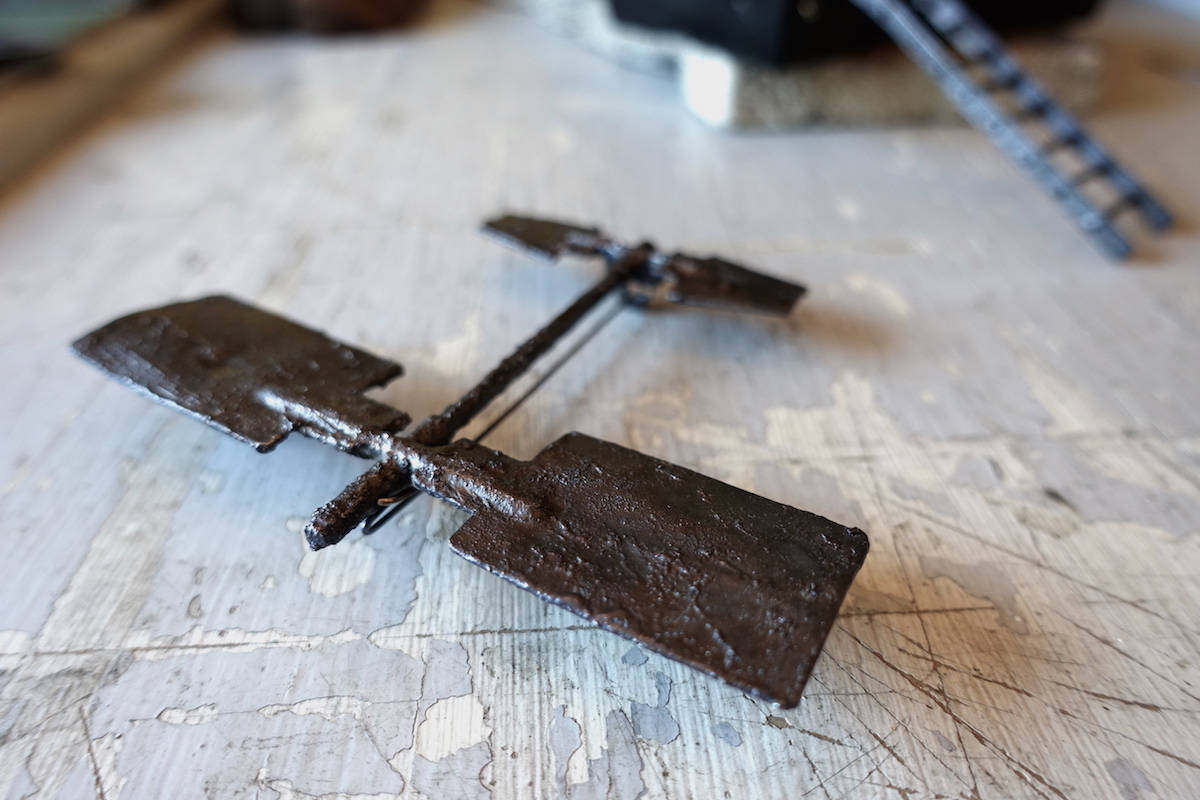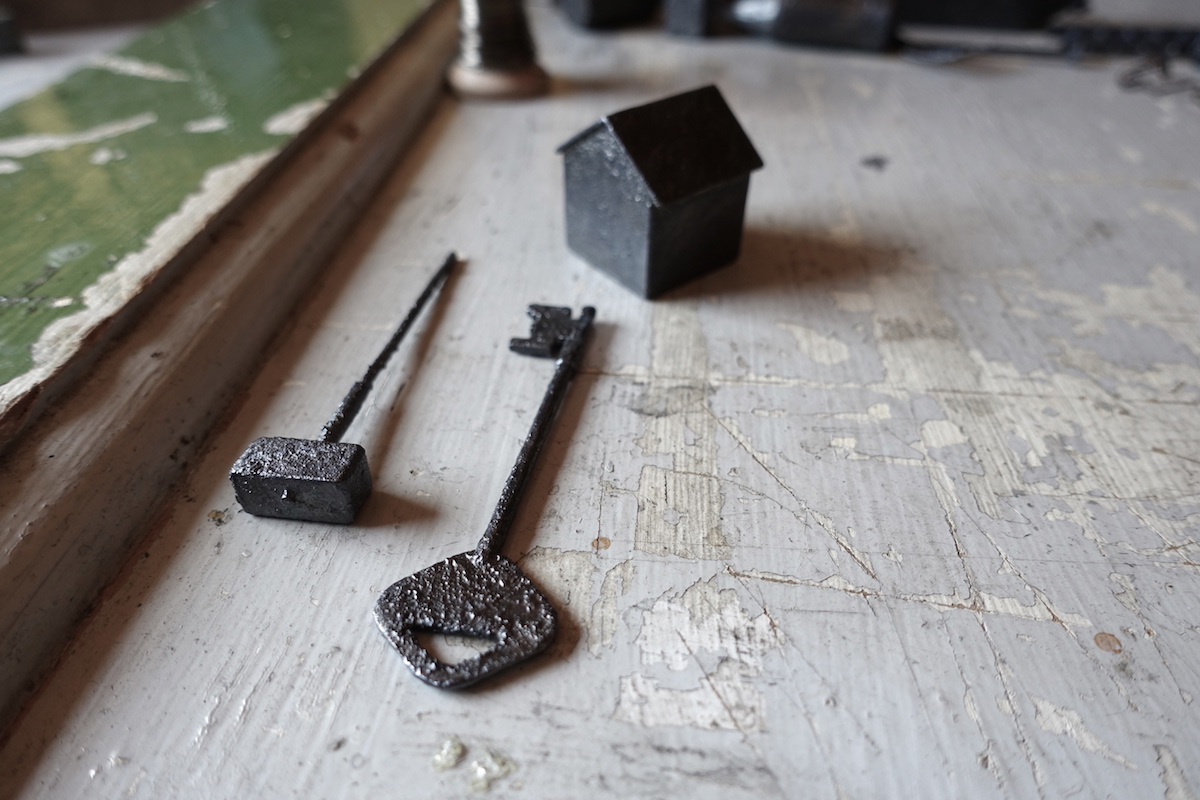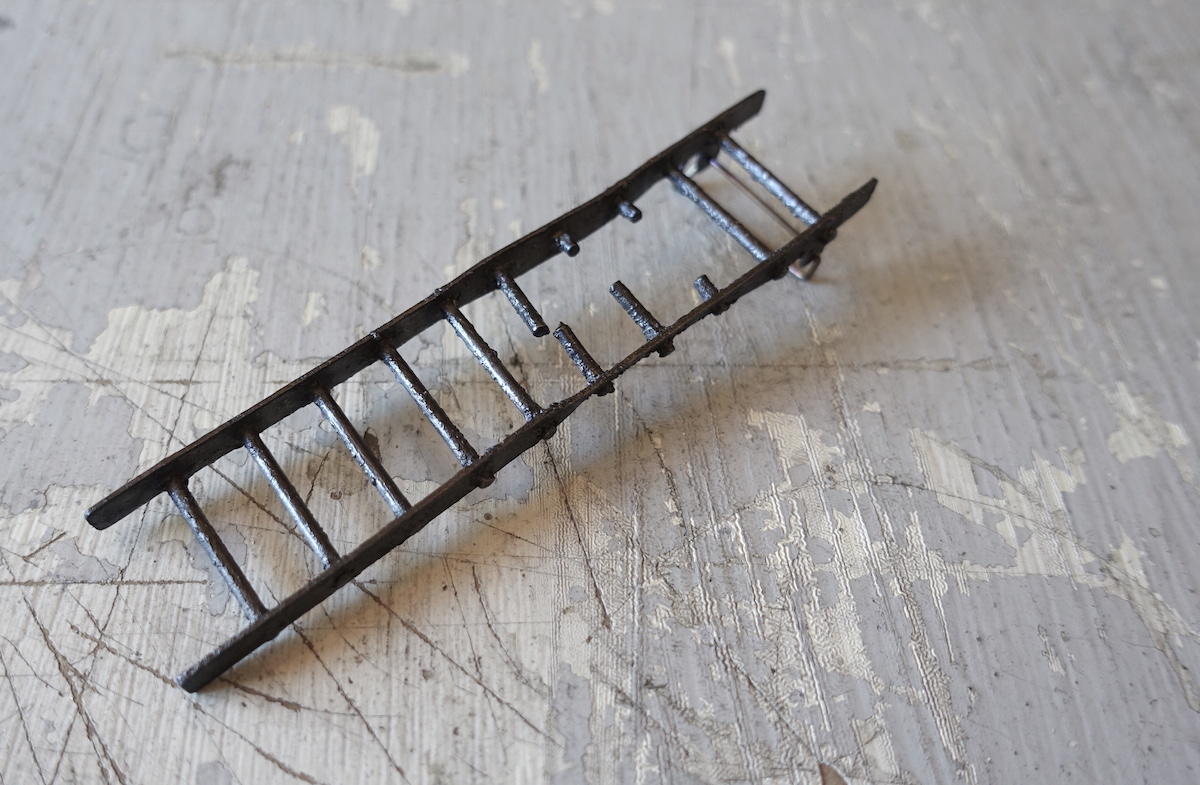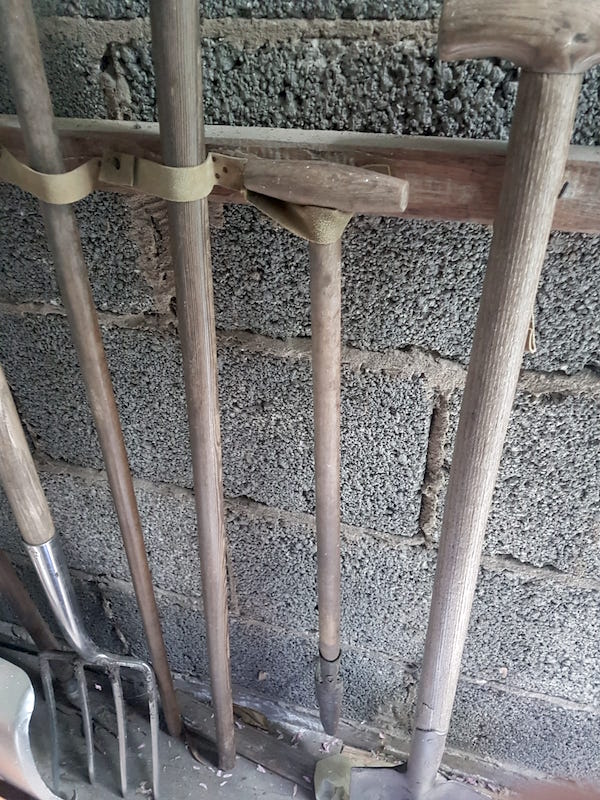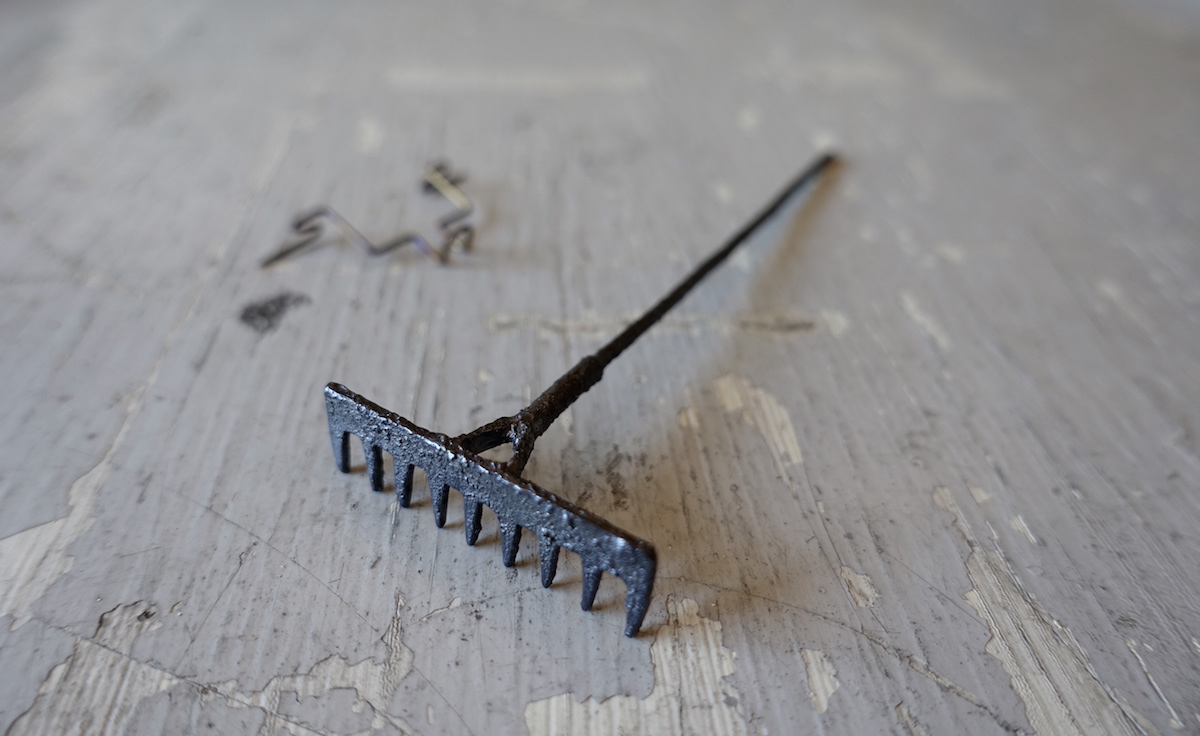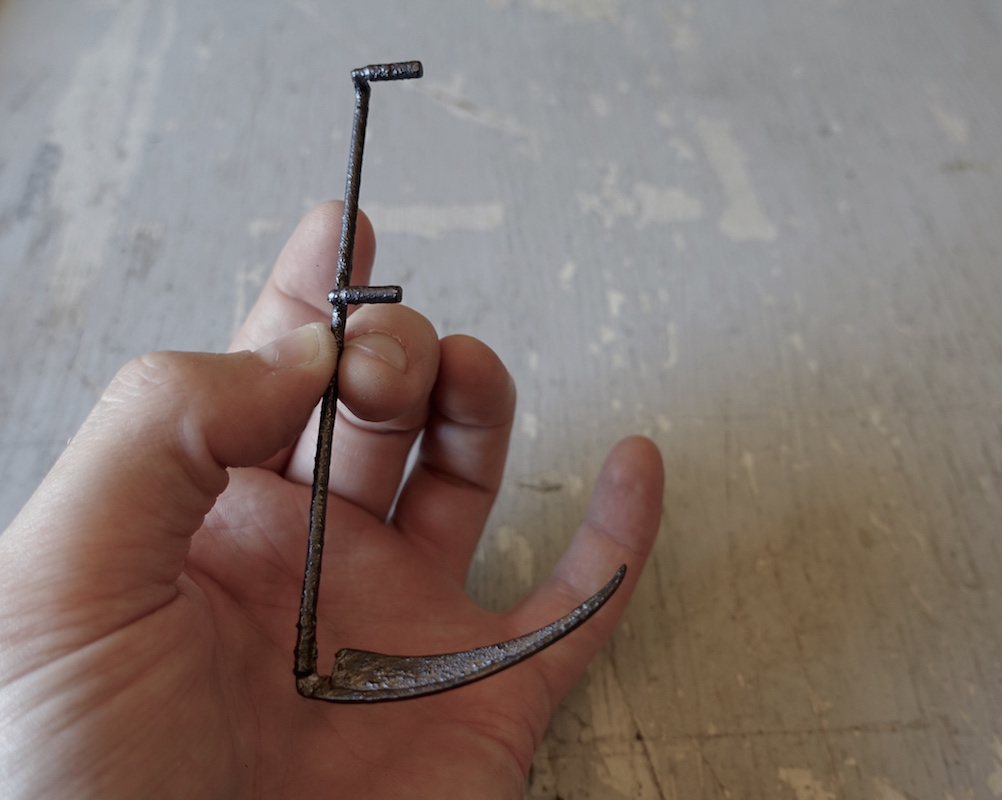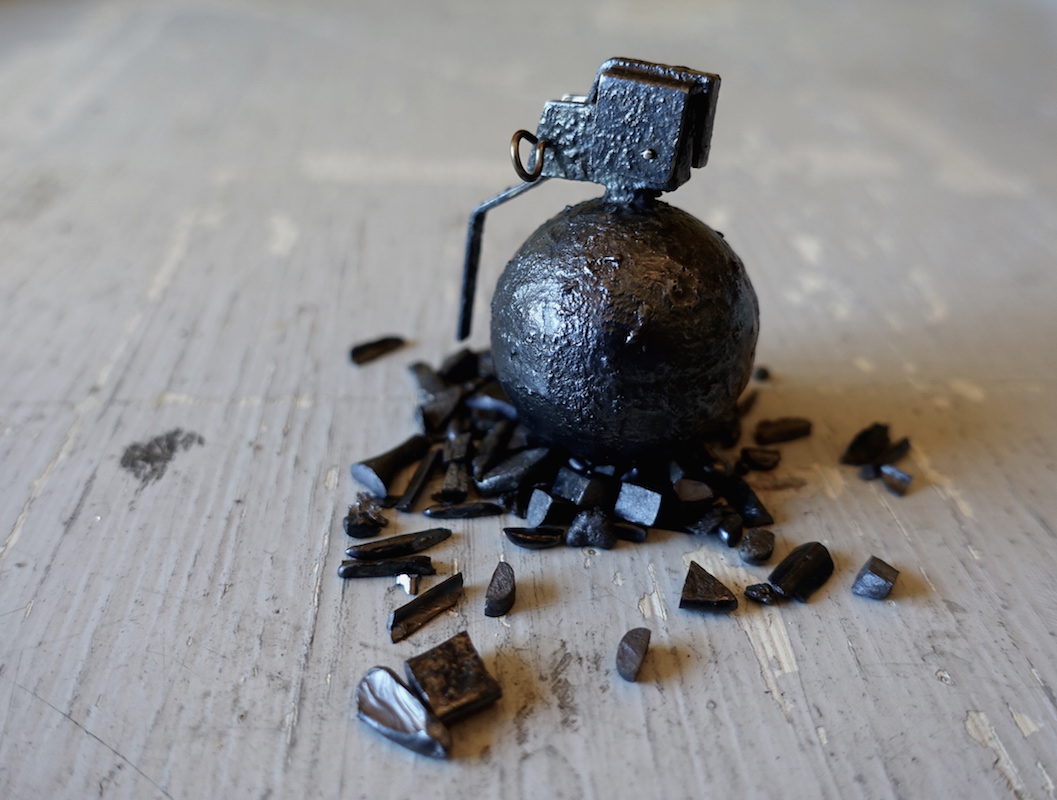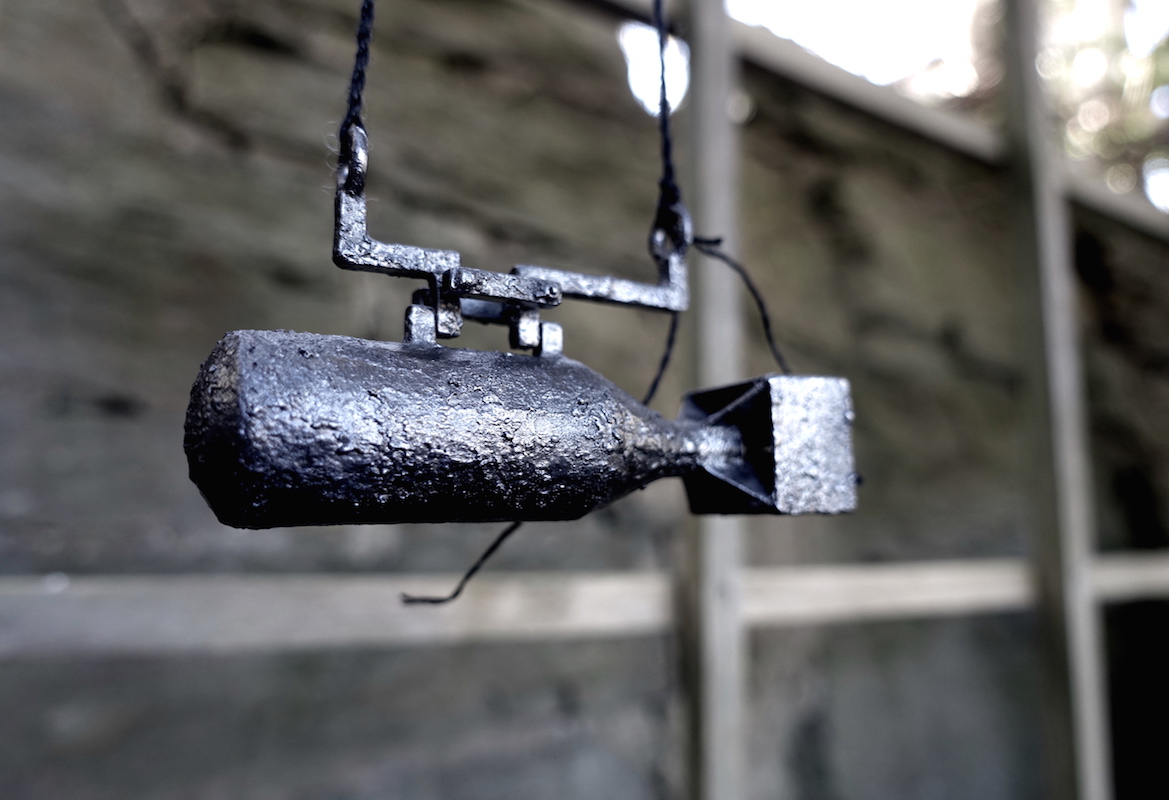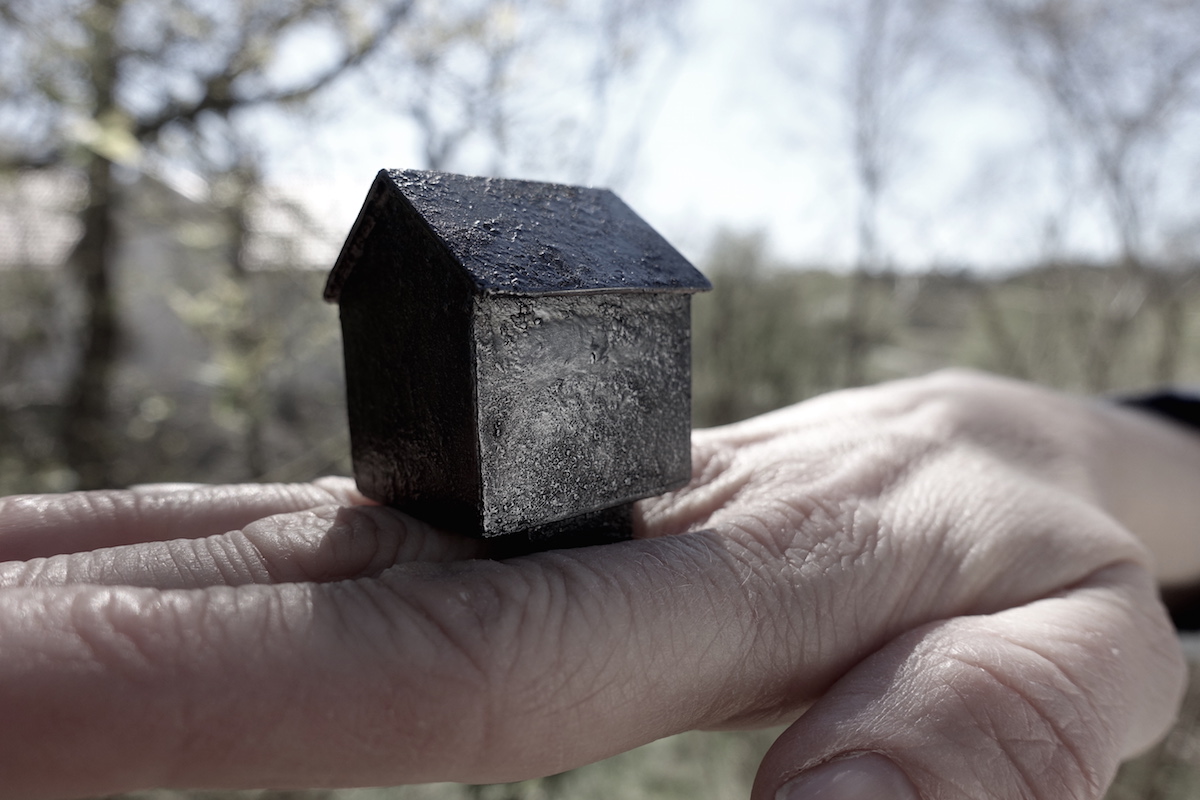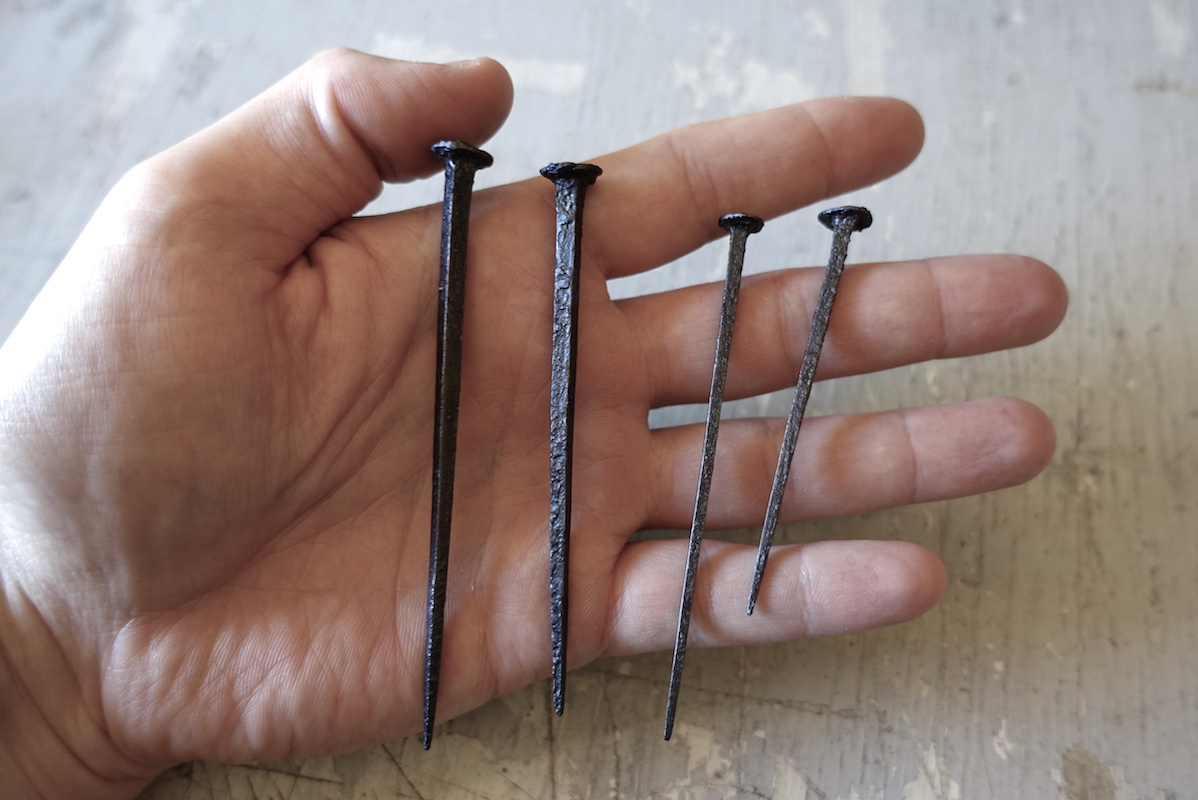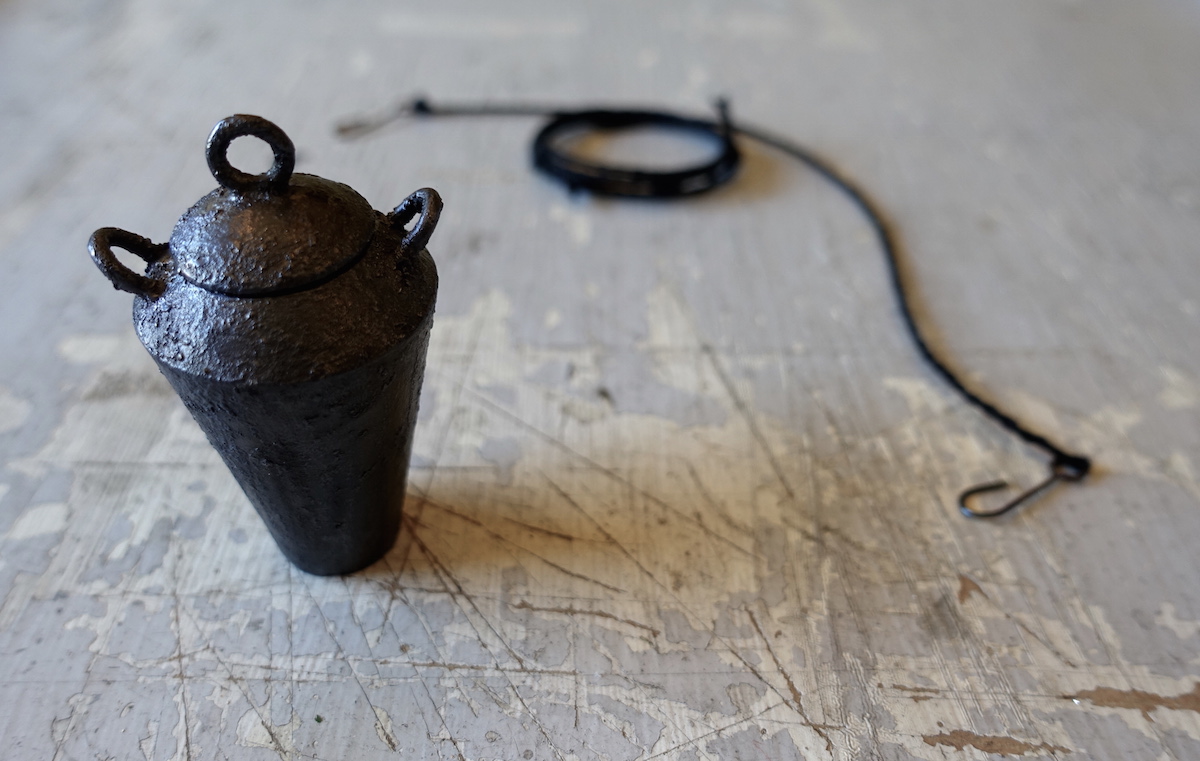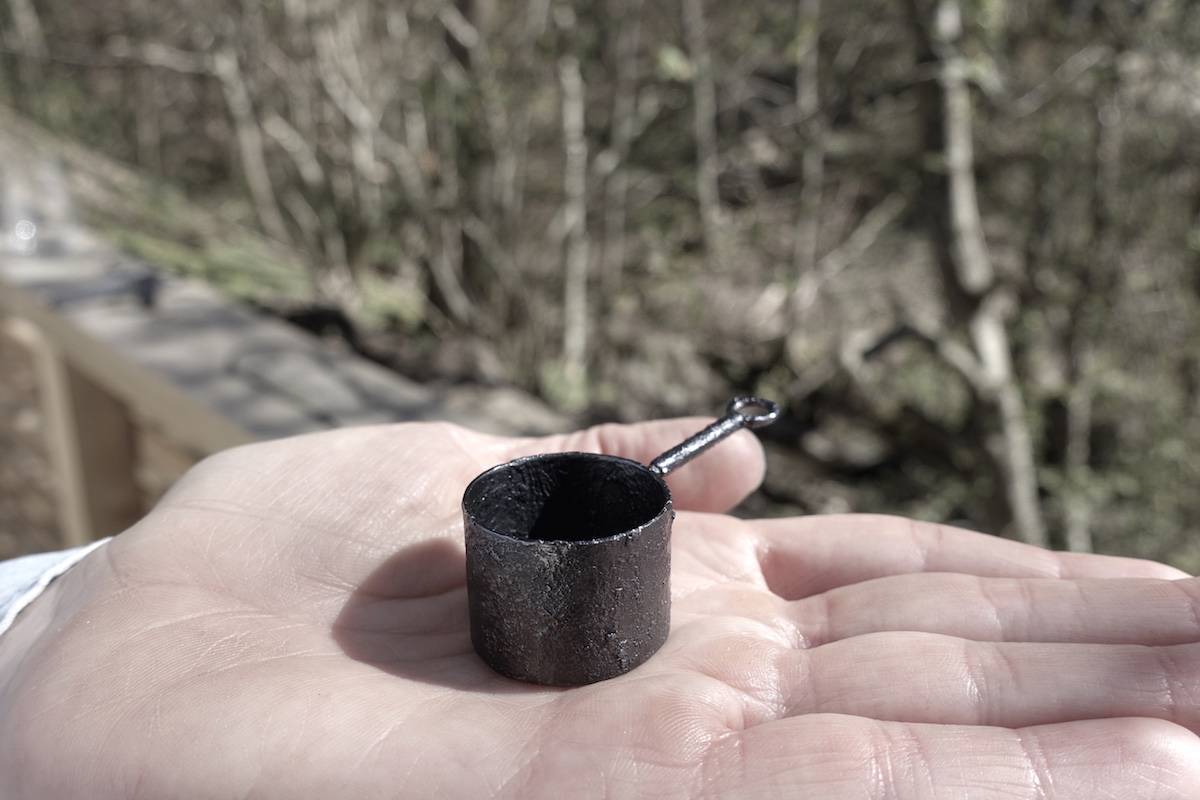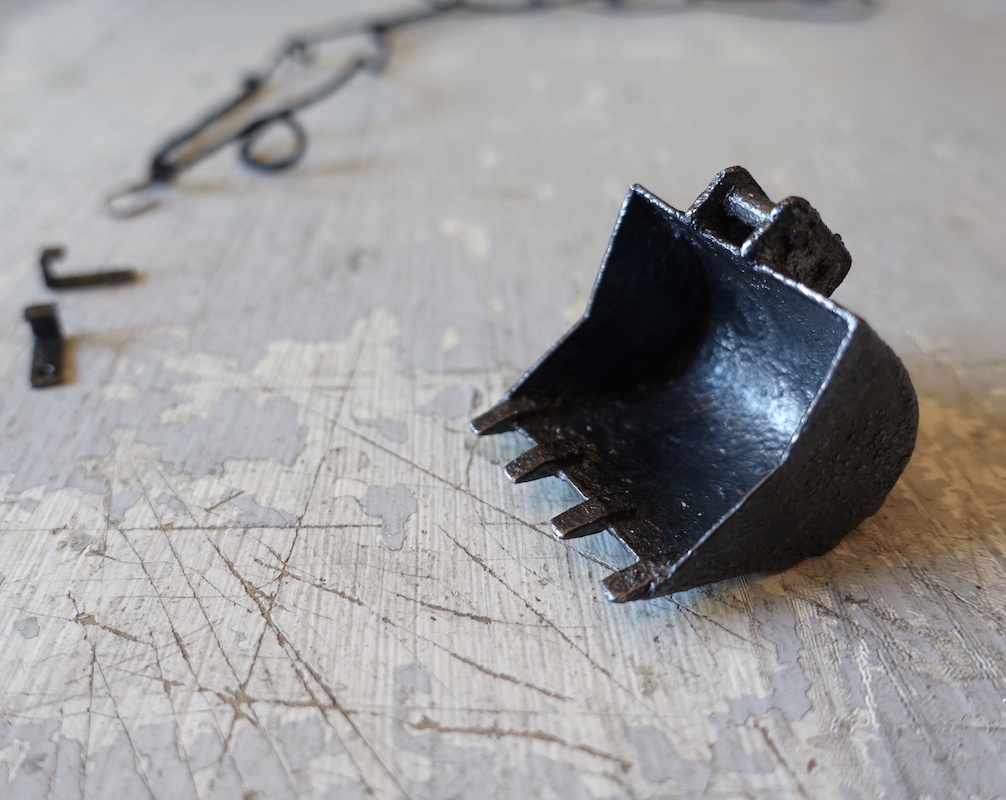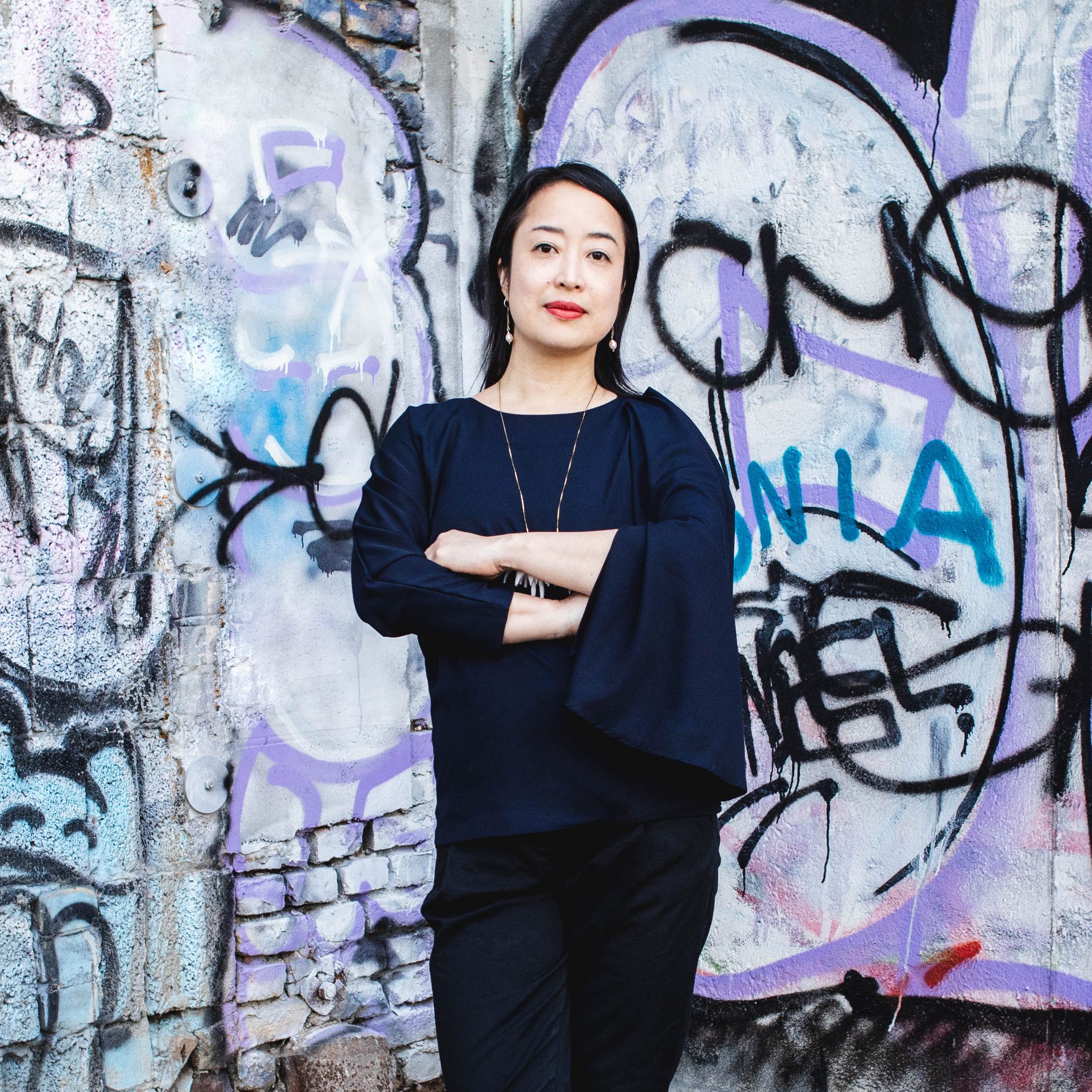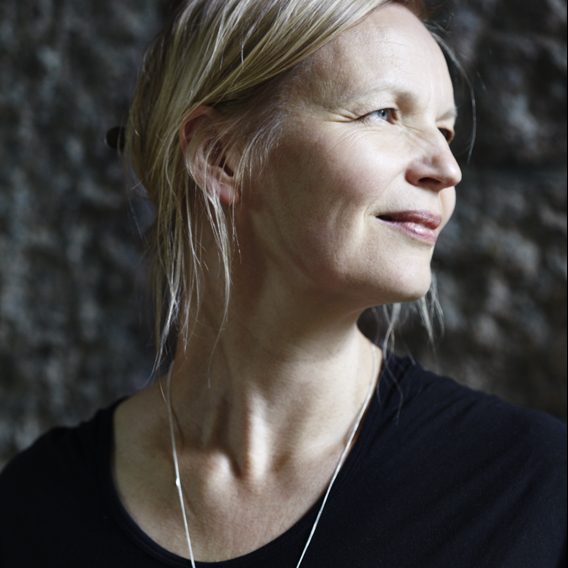Daily observations as jewellery
Examwork by Staffan Jonsson

The cemetery job is to take care of graves and maintain the cemetery, empty bins, keep after the weeds and so.
One day a colleague and I was asked to fill a grave after a funeral-service.
We brought shovels and buckets to fill the grave with dirt, some gravel and also flowers to plant.
As I stood there shoveling I thought of the tools and their different contexts.
Shovel and bucket were among my first toys to play with and now we stood here with the same things.
I stood outside at work looking at the sky one day and I saw an airplane crossing the sky above me.
I wouldn’t call myself religious but I find it strange to think there isn’t more to life than just the living-then-it-is-over-part and working at the cemetery often puts me in a more spiritual mood.
When I looked at this airplane in the sky I thought of a soul leaving a body.
I mainly make objects that humans have already made.
Representations of things that someone at some point for some reason thought was an idea worth to realize.
It is my opinion that the cultural objects in our world tell about how we place ourselves in relation to other people and to other species.
A friend of mine once said to me;
”The things you do, maybe they tell more about you than it does about humans, or culture.”
But I wouldn’t do what I do without any pre-existing model made by others first. I see everything as connected and influenced through fluid connections.
But yes, my choices of what I depict tell my perspective.
In a tutoring I had with Johanna Zellmer, a New Zealand-based artist, we talked about jewelry-solutions.
I want my jewelry to be jewelry but I also like them as objects.
The solution I feel must work with the piece and not feel forced.
Johanna suggested that I should pay attention to whats already there.
She asked me to look more at solutions in the life-sized world.
She sent me some photos of her mothers toolshed in Germany.
This conversation got my different brooch-solutions started.
As a make depicting objects I am aware of their many possibly different meanings, stories and associations depending on contexts and on who’s gaze they’re under.
The meaning behind each of these objects are connected to the viewer and their inner worlds foremost.
To me, in this project, they are notes or drawings in my notebook and a reminder of the work I do at the cemetery and my thoughts there.
I like daily chores and repetitions.
To do gardening or to be in the nature while working and observing cycles and seasonal changes.
There is something meditative to do things like raking leaves and see the grass filled with leaves again the next day.
Working the cemetery makes me think about death.
And also about violence, memento mori motifs and about love.
I think it is because I see all the rows of graves.
The abundance of dead people in one place.
I feel certain most of these deaths were okay far as dying goes but death is violent in itself I think. One day you are simply taken away and there is nothing you can do about it.
Unlike much else in life, which is about making choices, dying is (mostly) not up to you.
My reason to address violence in some of my work is because it awakes my empathy.
When I see suffering my reaction is to aid. If I see happiness or care I relax and think all is good.
However, not everything is good in this world. I look at the violence to not forget or ignore it.
Memento mori as a concept emphasis the fact that you are mortal and that you will die.
When I think about death I like to emphasize the connection we share simply because we are alive at the same time.
With the violence in my work I want to address the power of care in relations instead of destructive forces or dominance.
Little boy is the name of the first nuclear bomb humans used on humans.
USA dropped it over Hiroshima as a terrible example if you are to ”defy” a ”stronger force”.
When we hurt others we hurt ourselves equally.
The pike-scissor is a trap designed to hang from branches of trees into shallow waters along banks.
A small dead fish is put on the lower hook and the upper jaw is set in a spring-mechanism.
As soon as the pike bites down on the small fish the upper hook is released and springs down over the pikes head/jaw.
Sometimes the pike tears its own jaw or parts of its head loose while trying to escape. Sometimes it manages to rip away the trap with them, holding their mouths shut until they starve.
When I hurt others I hurt myself equally.
When I think of home I imagine a space were one should be safe.
Home is (partly) defined by the boundaries we set and try to set.
It is a place that we recognize and know.
Here we can dwell, keep our private scenes and our secrets.
But a home can also be lonely, a place full threat, cruelty and violence.
A place were we simply stay.
Humans distinguish between who get what in a way that makes me wonder.
We create weapons, we build nesting boxes for small birds to provide shelter from wether and predators as they raise their young and we make traps that cause our future killings ”unnecessary” suffering.
Crows are the most common animal at the cemetery I work.
I like to watch them as they fiddle with everything.
They look like treasure hunters as they collect what ever they find.
At least I like to pretend that they hunt for treasures.
I have seen them steal candles, rusty nails, twigs and cans.
They eat the candles, I don’t know what they do with the rest.
One day a colleague of mine told me that birds, dogs and bees has all been seen as harbingers of death.
The same week we discovered a bee-nest in a hollow part of a tree trunk in the far end of the cemetery.
Psycopomp is greek and it means guide of souls.
In mythology psycopomps are characters who’s task is to guide a dead persons souls to the afterlife.
This means they’re not death themselves but rather they help the diseased with the crossing between the world of the living and the dead.
Their task is not to judge, but merely to help the dead further on their journey. Some of the more famous psycopomps include Grim Reaper, Odin and Charon.
In Greek mythology Pandoras urn is a wedding gift Zeus saw the potential in humans as a threat towards the gods when they had been given the gift of fire from Prometheus.
Zeus answer was Pandora. He knew Pandora would open the urn eventually making her the villain, even though he had created both her, her curiosity and the urn. In the bottom of the urn Zeus placed Elpis which is the human trait of hope and fear. Elpis also makes humans able to live with hope through all the despair the urn unleashed.
This urn, like little boy was created as a show of force and a terrible example if you are to defy ”a stronger one.”
I want to engage in others with vulnerability and empathy.
To make oneself vulnerable towards another is to take a risk, but it is also to give trust and responsibility for one and another.
The opposite to this is to distance oneself from someone.
To make someone into a such a stranger that empathy no longer is possible.
I like to cook.
Like the raking of leaves this is to me a very concrete thing that also has to do with making something that will disappear in the flow of time and yet it is something I share with others.
We all have to eat to live.
It is a small but essential thing that connects us.
For me it also is a humbling way to remind myself of my temporary place in everything and how brief it all really is.
Once I saw a documentary about a man who lost his entire memory in an accident. He only remembered his twin-brother.
His life was rebuilt with the memories from others around him and what he was told.
He spent a lot of time trying to understand his past. Many years later as he and his brother dug out their parents estate he found out that his brother had lied. His brother had left out a lot of hurtful experiences and constructed a false and incomplete version of his life.
[… For the fact is that neuroscientists who study memory remain unclear on the question of wether each time we remember something we are accessing a stable ”memory or fragment” – often called ”a trace” or an ”engram” – or wether each time we remember something we are literarily creating a new ”trace” to house the thought.]
From Bluets by Maggie Nelson
Memory seems to be this fragile thing that partly makes up who we are.
Previous year to when I saw this documentary and read this book I was with a colleague at work. We were to remove a headstone from a grave that was no longer in use. By this I mean that it was no longer paid for and the church took the site back.
My colleague brought a crowbar and a sledgehammer.
I thought it was a jake at first.
When we came to the sight he swung the hammer a couple of times and the headstone with name and last god byes was shattered in pieces.
Conclusions
In the beginning I wanted to see what my thoughts looked like as jewelry. This investigation has been interesting and I have enjoyed the process.
However, after around 20 objects made I started to feel that the work I did came to a halt.
I started to wonder for who I do this work. It started in me but I want it to go beyond me to.
A part of the work is about a personal investigation, but I wonder now if I could use this way of working to make the same for others.
I wonder if I could develop new pieces in conversation with others. Maybe based on interviews or wishes.
I have tried something similar earlier but then I collected hair from people and made that into pain-brushes.
Another part of the work is about storytelling but rather than telling my story as a continuum I find the idea to work with others intriguing.
Would other let me make their stories int objects?
Building on the idea os a series I can imagine trying to capture a person or single parts of a persons life based on talks with them.
When I look at my work it strikes me that groups of objects can be more directed than individual objects.
Simply by combining three objects a story emerges.
Salavat Fidai is a Russian artist who carves miniature-sculptures out of pencil tips.
He pics motifs from pop culture and art history mixed with random other things; hands, trains and padlocks are few examples.
Fidai has made a series of called Landmarks that consist of known buildings such as the Eiffel-tower and Big ben.
I like the use of pencils as they are easily read as a group, either as in a case, in a jar or scattered on a desk.
If I backtrack my work in this report regarding influences, I talk there about the act of witnessing, and portraying.
My next step would be to see how I could capture another persons story in a piece or pieces of wearable jewelry.
Maybe I also would need to change, or at least reconsider, my medium.
The natural way in which Fidai can show groups and yet keep the material story relevant is something I find inspiring.
The pens are everyday-objects that everyone can relate to and yet to see the small sculptures makes them unique and interesting as works of art.
I chose jewelry as my medium to keep the wearable aspect relevant. I chose to work with silver to make my work durable and also I had found this niello-technique which allowed me to work sculptural but with a texture that reminded of thick oil-paint or scratched sketches kind of.
I did it in this way I think to keep the work close to sketching in a feeling-based kind of way.
Looking at it all now I feel that there is time for a next step.
I would like to consider material as part of the story being told more. (As with the hair for example) Or just to work more freely with all kinds of material.
I like how well the blackness, the surfaces and the cohesiveness with needles and necklaces hold this work together, but it is also true that now I start to feel almost limited by it.
There is still room for much development and investigations, but the time, for now, is up.



